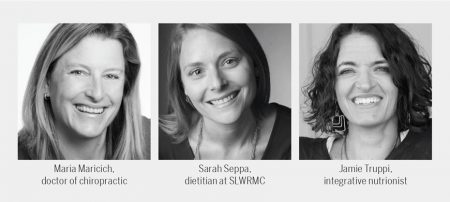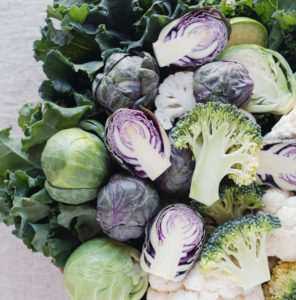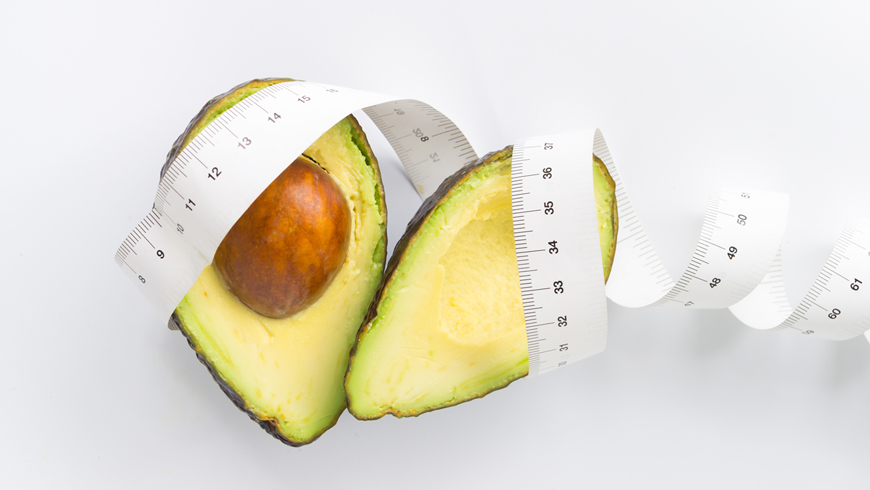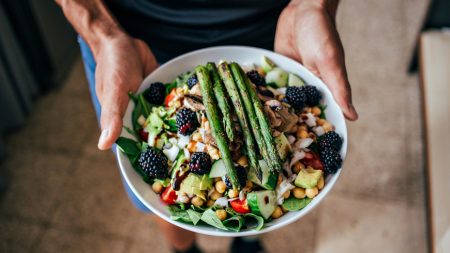Alex Margolin was intrigued when author Robb Wolf exhorted him to eat like a caveman in the 2010 book, “The Paleo Solution.”
Margolin, who runs Sun Valley Fitness in Ketchum, decided to give “the original human diet” a try and began loading his plate up with meat, fowl, leafy greens, nuts, and berries.
“It was a major revelation because I was completely unaware how certain foods were creating an inability for me to perform when I competed in Nordic races,” said Margolin. “As I got into it, I noticed I was less achy, I had better performance and recovery, and more consistent energy.”
 Margolin was so encouraged by his success that he began teaching those in his exercise classes how to adapt the Paleo diet to their lifestyles. “People think you’ve got to eat a ton of meat, but you can be vegetarian and do Paleo,” he said.
Margolin was so encouraged by his success that he began teaching those in his exercise classes how to adapt the Paleo diet to their lifestyles. “People think you’ve got to eat a ton of meat, but you can be vegetarian and do Paleo,” he said.
The Paleo diet has become a mainstay of many Wood River Valley residents, along with the Keto diet and the Whole30 diet.
Maria Maricich, a doctor of chiropractic who has a Ketchum practice focusing on wellness, began using the Paleo diet and later the Keto diet to address gastrointestinal and other issues she believes stemmed from concussions she suffered as an Olympic downhill racer. Both helped her, and she began using them with clients to address such problems as mood swings and aging brains. “For me it’s about reducing the inflammation in the body and helping cells work better,” said Maricich.
We asked Maricich and two others to weigh in on the three diets. Sarah Seppa is a dietitian at St. Luke’s Wood River Medical Center (SLWRMC) and a Certified Diabetes Educator. Jamie Truppi holds a Master of Science and Nutrition degree from Maryland University of Integrative Health.
THE PALEO DIET
This diet advocates eating like our ancestors did in the Paleolithic era more than 10,000 years ago. It touts red meat, eggs, fowl, fish and shellfish, non-starchy vegetables, berries, nuts and seeds. And it avoids grains, beans, dairy and starchy vegetables like potatoes.
It’s the easiest of the three diets to sustain long term because it allows Paleo-approved versions of foods like pizza, bread and cookies, while eliminating processed and often allergenic foods, said Truppi. And, in small studies, it has been shown to help people lose weight in relatively short amounts of time, while reducing blood pressure, improving insulin sensitivity and reducing total cholesterol, LDL and triglycerides, said Seppa.
But research shows that those who consume more than 20 percent of their calories from animal proteins are four times more likely to die of cancer, Seppa cautioned. In a recent TED talk that Seppa cited, Christina Warinner, a researcher and educator, pointed out that there are some discrepancies when it comes to foods that would have been eaten by our Paleolithic ancestors. “A wild banana has so many seeds it is inedible,” Seppa relayed. “Wild lettuce contains latex, which renders it indigestible. Wild tomatoes contain tomatine and solanine, which are poisonous to humans. Wild avocado has only a few millimeters of fruit—our ancestors wouldn’t have bothered with it. Broccoli did not exist in the Paleo period. And we’ve bred the cyanide out of almonds,” she said.
Conversely, Paleo ancestors consumed grains and beans that are not allowed on
the modern-day Paleo diet. Again, Seppa
cited Warinner: “Grains like barley have been found in the molars of our Paleolithic ancestors, Neanderthal tooth plaque has revealed that they consumed wild varieties
of peas and fava beans. And contemporary
hunter-gatherer societies, such as the
Kung San in the Kalahari and Aborigines, consume legumes.”
KETO DIET
The Keto diet was developed in the 1940s to treat children with epilepsy but was shelved as doctors found medications to address the condition. It was revived as a tool for helping people lose weight, said Maricich.
This diet cuts carbohydrate intake, replacing it with healthy fats that put the body into a metabolic state called ketosis. Eighty percent of the diet is fat with a moderate protein intake. Carbohydrates are limited to 25 grams a day.

The Keto diet focuses on replacing carbs and sugars with healthy fats.
The diet enables weight loss because the body switches to fat burning by using ketones, rather than glucose, as fuel. The ketones balance the blood sugar level, addressing problems like Alzheimer’s, which has been called Type 3 diabetes because of research that shows a relation to insulin resistance, said Maricich.
But Seppa says the brain does not function as well on ketones, a by-product of fat breakdown. “I have seen it used at Texas Children’s Hospital for a protein-sparing modified fast, but it should always be medically supervised,” she said. “Electrolytes can get wonky so they need to be monitored. And that is not possible without medical supervision,” she said.
Achieving a state of ketosis requires a specific macronutrient intake, which is difficult to calculate, said Truppi. “The elevated requirements for fat may help someone feel satiated, but poor-quality fats and/or a high-fat intake may lead to inflammatory conditions and even nutrient deficiencies due to low intake of diverse foods that actually provide healthy micronutrients,” she said.
WHOLE30
The Whole30 diet is a 30-day program that strips sugar, grains, dairy, legumes and alcohol from the diet. Those following the program are encouraged to eat moderate portions of meat, seafood, eggs and fruit, lots of vegetables and plenty of natural fats.
“What I like is that it focuses on whole, unprocessed foods. What I don’t like is that it restricts beans and whole grains, which are healthy foods,” Truppi said. “They are high in fiber, which lowers cholesterol, keeps us feeling full and satiated. They are lower in calories and fat than most meats and they give us energy.”

It’s likely no surprise that all diets include eating a lot of vegetables.
That said, the Whole30 could be useful for resetting eating behaviors in the short-term, said Truppi.
Truppi cautioned that none of these diets are recommended for certain populations, such as pregnant or breastfeeding women. “All are hard to sustain because they’re restrictive,” she added. “All diets should really be tailored to the individual based on genetic risk, unique physiology and biochemistry, lifestyle and environment.”
Maricich agreed. “All these are fairly extreme diets, so start with baby steps. The Whole30 is a good thing to dedicate yourself to for 30 days. I think a little variation is fine with the others—you can give yourself a little leeway on the weekends if you want.”
Plant-based eating remains the healthiest way to eat for heart health, preventing and reversing diabetes, and cancer and other chronic diseases, added Seppa. “I am a big fan of the Mediterranean diet: eating lots of vegetables, fruits, whole grains, fish, nuts, seeds and beans, limiting poultry and dairy to a few times a week and eating red meat and sweets sparingly.”



